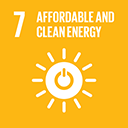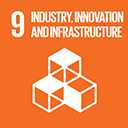
The China Southern Power Grid’s dependence on non-renewable fossil fuel-based energy sources contributes to GHG emissions. This adversely affects air quality and public health throughout the region. The Micro Hydro Bundle 2 project aims to mitigate these impacts by utilising local hydropower resources to generate renewable electricity, which is then supplied to the grid.
The project addresses the region’s reliance on fossil fuel-based energy sources by establishing three run-of-river hydropower stations—Baishijiao Stage I, Gongtan, and Aohua Stage I—to generate renewable electricity. Each of these hydropower stations utilises a nearby river as a resource, employing a water diversion system that channels water through tunnels, pressure tubes, and over hydrologic turbines to produce optimal electricity output. The infrastructure of these stations includes water-retaining dikes, diversion tunnels, pressure tubes, and hydrologic turbines and generators, which together enable efficient energy generation. Electricity produced by the turbines is then increased to higher voltage levels using on-site transformers and transmitted to substations located near each power plant. From these substations, the electricity flows through 10kV transmission lines, connecting directly to the local grid and ultimately feeding renewable energy into the China Southern Power Grid.

supplied to the energy grid on average per year.

Builds resilient infrastructure, promotes sustainable industrialisation, and fosters innovation.

of GHG emissions avoided or removed per year.
This hydropower project will significantly reduce greenhouse gas emissions in the region by replacing fossil fuel energy with renewable electricity. Its goal is to improve air quality and public health while promoting sustainable energy infrastructure. The project hopes to support China’s climate goals by decreasing reliance on non-renewable resources within the China Southern Power Grid.